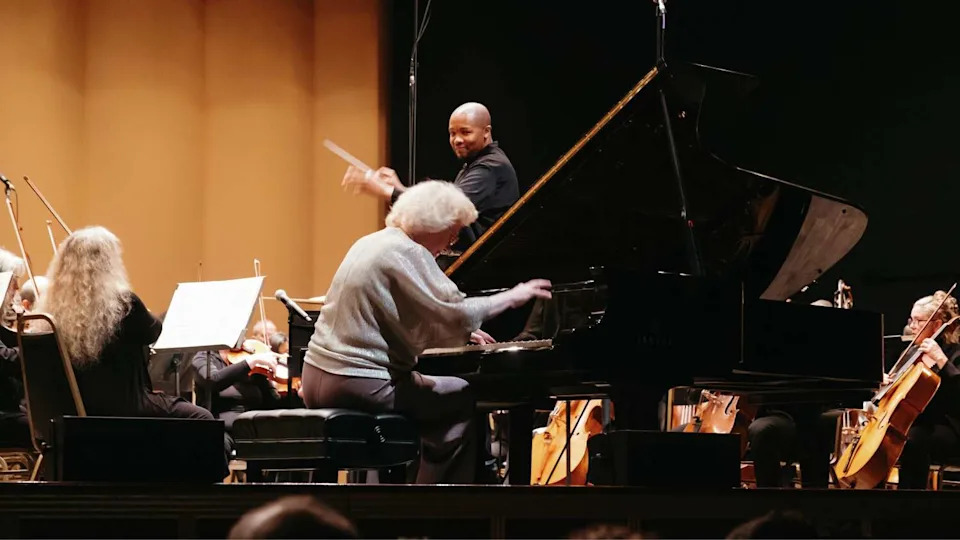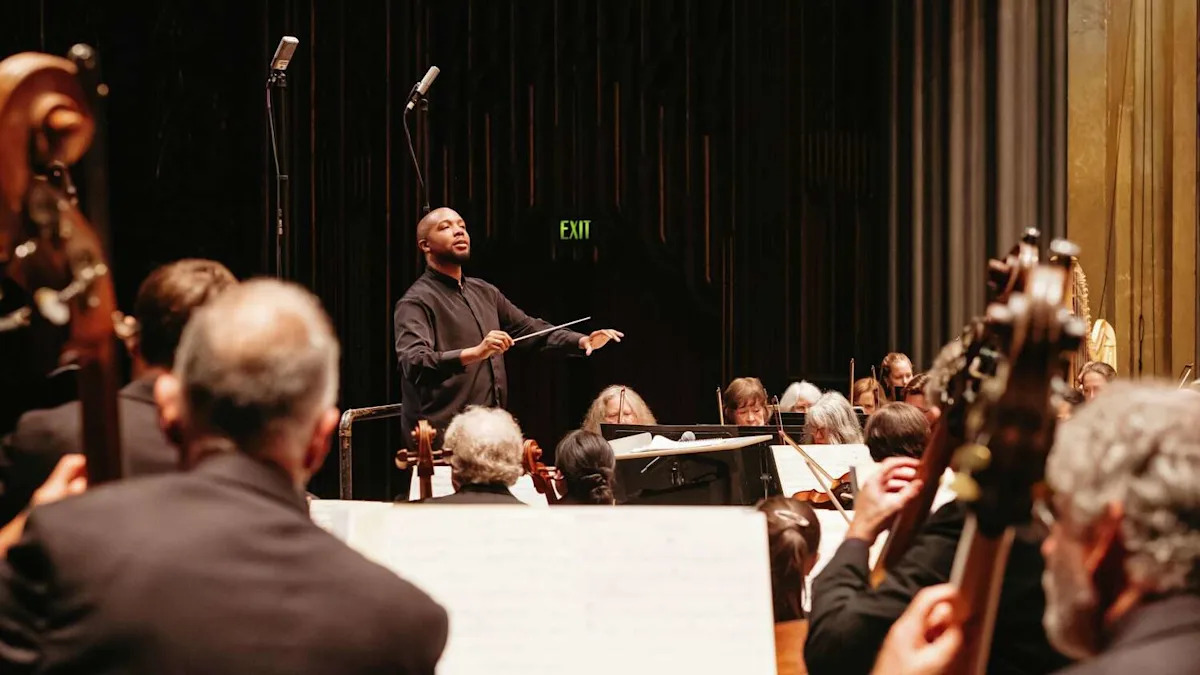When Oakland Symphony Music Director Kedrick Armstrong tried to describe the logic behind the program for the orchestra’s season opening concert, he summed it up in one the word: “authentic.”
It wasn’t much of an explanation, but an apt description of the arts organization and its audience, which filled the Paramount Theatre on Friday, Oct. 17. The crowd was a true cross-section of the city – 20-somethings, longtime subscribers and families, including a baby who only lasted through the first piece. They dressed as if at the movies, and applauded or shouted whenever the spirit moved them.
Oakland Symphony concerts feel like a party with a good live band, and Armstrong leans into that energy, shaping programs that are as spontaneous as the people who show up to hear them.
Adding celebrity to the evening, 84-year-old composer Adolphus Hailstork flew in from Virginia to hear the performance of his Symphony No. 1 (1987). It’s a work of great craftsmanship, with an emphatic opening, a la Joseph Haydn, pushed along by consistent syncopations. That opens up to a second theme of great lyrical beauty. The scherzo has a fleet Mendelssohnian grace, and the finale, a joyful busy rondo, fizzes with jazzy licks.
Originally written for a New Jersey summer music festival, the piece fits Armstrong’s personality and the orchestra easily handled its modest technical demands in the evening’s best performance.
When Hailstork rose to acknowledge the moment, the audience met him with a wave of applause that swelled through the auditorium like another movement in the symphony.

Oakland Symphony Music Director Kedrick Armstrong (Christine Cueto/Oakland Symphony)
But the clear audience favorite was soloist Sara Davis Buechner, whose febrile account of Maurice Ravel’s Piano Concerto in G Minor was the concert’s other high point.
Buechner, a frequent guest of the Oakland Symphony, tore through the challenging opening movement with virtuosic intensity. Then she turned inward for a second movement of luminous calm and control. She was in command, technically, although her pedaling was so emphatic – her foot lifting completely off the floor – that she was actually out of breath at the conclusion. The orchestra hung with her, though Ravel didn’t make it easy on them, either.
This is an ensemble that often doesn’t have everything buttoned down and sonically impeccable. Armstrong thus deserves kudos for opening the program with Anna Clyne’s colorful, theatrical “This Midnight Hour”(2015).
It’s a 12-minute work set in motion by downward-rushing scales in the strings, representing a woman running through the night. The score isn’t fully programmatic, but in the middle section, half of the violas are asked to play a quarter-tone sharp “to emulate the sonority of an accordion playing a Parisian-esque waltz.” I’ve heard this effect land more cleanly in other performances, and in a score that has so much going on there were balance problems and some details that could have been clarified.
Even so, the final section of the piece came off nicely with haunting solos from trumpeters William Harvey and Leonard Ott.
The finale was Igor Stravinsky’s 1919 suite from “The Firebird.” The Oakland Symphony’s sound was necessarily leaner than a big-budget orchestra, but they did themselves proud with the interpretation of this repertory staple, which has such a big soundscape. The winds shone throughout, with phenomenal solos by principal bassoon Deborah Kramer and, in the finale, horn Alex Camphouse.
In the “Infernal Dance of King Kaschei,” with Armstrong driving them like Derby winners, the players went briefly savage, delivering a bravura account.
Michael Zwiebach is a freelance writer. This article has been provided in partnership with San Francisco Classical Voice.
This article originally published at How Oakland Symphony’s season opener turned classical music into a party.

